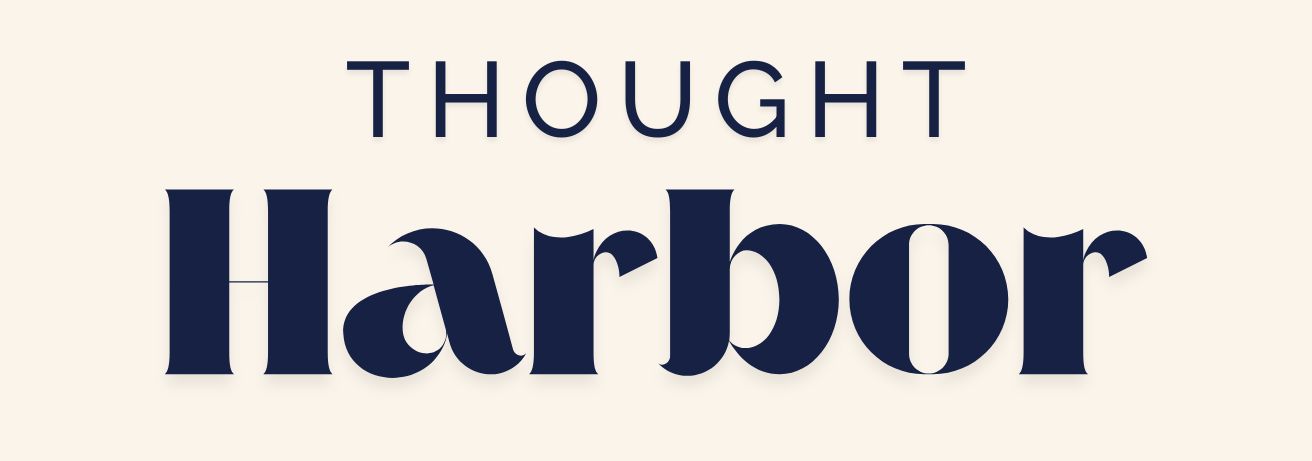Outline
- Beneath the Surface: Where Thoughts Begin
- The Nature of Thought Currents
- Are Your Thoughts Really Yours?
- Cognitive Filters and Mental Conditioning
- The Brain’s Need for Narrative
- How to Work with, Not Against, Your Mind
- Closing Thoughts: Choosing Your Current
- FAQs
Beneath the Surface: Where Thoughts Begin
Most of the time, we treat thoughts like facts. They appear, and we follow. They arrive, and we believe. But what if thoughts are not commands, not truths, not even wholly our own?
Imagine the mind as an ocean—vast, layered, and alive with movement. At the surface, small waves: fleeting thoughts, reactions, reminders. But beneath that, deeper currents flow. These are the patterns shaped by memory, belief, culture, trauma, curiosity.
And just like in the ocean, we rarely notice the current… until we try to swim against it.
The Nature of Thought Currents
Thoughts don’t rise from nowhere. They move in patterns—some inherited, some learned, some unconscious. Psychologists refer to this as automatic thinking: rapid, involuntary thoughts that spring from deeper mental frameworks.
These currents guide how we interpret the world. Two people experience the same event, yet their thoughts diverge entirely. Why? Because their internal oceans are shaped by different histories.
A thought current isn’t inherently good or bad. It’s a direction. The question is: does the direction serve you?
Are Your Thoughts Really Yours?
We often believe that our thoughts are original, chosen, or even neutral. But most of them are echoes. Conditioned scripts. Old stories.
Some were handed to us by parents (“Success means working hard, no matter the cost”).
Others by culture (“Be productive or you’re falling behind”).
Still others by past wounds (“Don’t trust people too easily”).
And yet we rarely pause to ask: Do I still believe this? Or have I just never questioned it?
Metacognition—the ability to think about our thinking—is what separates reaction from reflection. It’s how we begin to notice the water we’re swimming in.
Cognitive Filters and Mental Conditioning
The brain is efficient. It builds shortcuts—schemas, biases, and filters—to make sense of a complex world. But these same shortcuts can trap us.
Confirmation bias ensures we notice only what supports our existing beliefs.
Negativity bias means threats stick harder than joys.
Cognitive distortions, like black-and-white thinking or catastrophizing, can distort the world into extremes.
These aren’t flaws—they’re protective mechanisms. But they need updating. Left unexamined, they steer us through life using outdated maps.
The Brain’s Need for Narrative
Here’s something beautifully human: the mind is always trying to make meaning. Even when information is incomplete, the brain fills the gaps. This is called narrative construction—our natural drive to turn life into story.
This is why we explain a stranger’s glance, predict failure after one mistake, or replay a conversation long after it ends. The brain doesn’t like open loops. It closes them—even if it has to invent meaning to do so.
But stories aren’t just told outwardly. They’re told internally too:
“I’m the type of person who always fails.”
“No one really understands me.”
“I have to prove my worth.”
Thoughts like these don’t just appear. They evolve from years of repetition. And they shape how we feel, act, and choose.
How to Work with, Not Against, Your Mind
You can’t stop thought currents—but you can learn to recognize them. You can pause before being swept away. You can decide, this one’s familiar, but I don’t have to follow it today.
Here are practices that help:
1. Track Thought Themes
At the end of each day, jot down recurring thoughts. Patterns will emerge—self-doubt, control, fear of judgment. Awareness creates choice.
2. Reframe with Curiosity
Instead of “Why am I like this?” ask “What shaped this thought?” Curiosity opens the door that judgment slams shut.
3. Practice Thought Labeling
This is a technique from mindfulness-based therapy. When a thought arises, name it: judgment, fear, planning, comparison. Labeling reduces identification and gives space to observe.
4. Interrupt the Narrative Loop
If you notice yourself replaying a mental story, gently disrupt the loop. Move your body. Speak aloud. Change the environment. Story loses power in motion.
Closing Thoughts: Choosing Your Current
You are not the thoughts you think.
You are the one noticing them.
This doesn’t mean ignoring thought or forcing yourself to “think positively.” It means recognizing that your mind is both ocean and observer. That while you can’t always control what arises, you can choose what you return to.
Some thought currents are healing. Others are harmful. Some were necessary once, but now weigh you down.
The invitation is simple, but profound:
Swim with intention.
Choose the currents that carry you closer to who you want to become.
And when an old wave rises, remind yourself—
You are allowed to let it pass.
FAQs
Can we ever fully control our thoughts?
No—and that’s okay. Thoughts will arise involuntarily. The goal isn’t control, but awareness. Once you’re aware of the thought, you can choose your response.
What’s the difference between thought and belief?
A thought is a single mental event. A belief is a thought you’ve repeated—or accepted—so often that it feels like truth. Beliefs shape perception more deeply and need conscious questioning to evolve.
How do I shift long-standing thought patterns?
Through repeated awareness and new action. Notice the pattern, pause, and choose differently—even in small ways. With consistency, the current begins to change.











